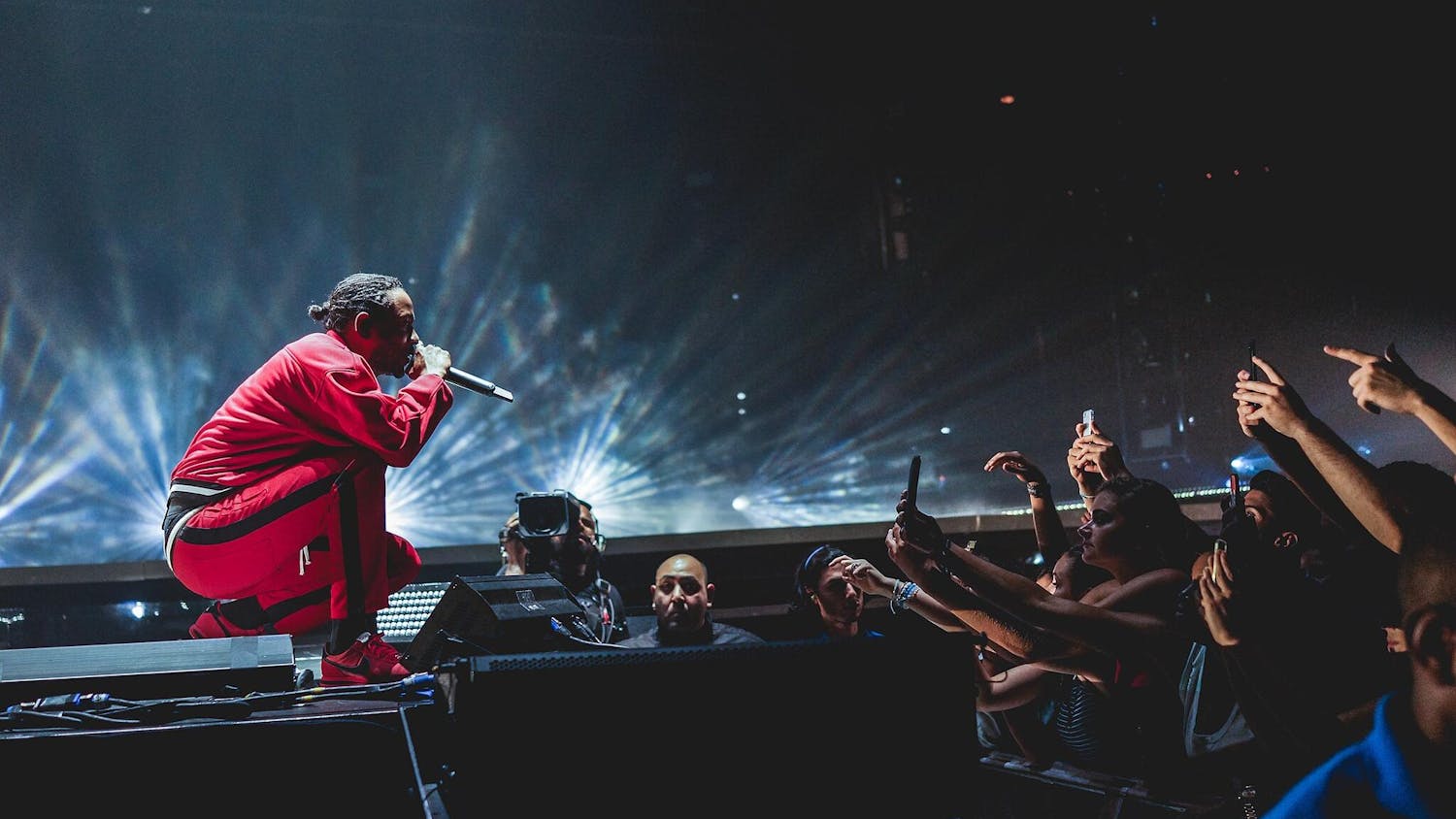The Monet/Lichtenstein exhibit now at the Museum of Fine Arts, Boston (MFA) through Sept. 25 examines the relationship between renowned Impressionist painter Claude Monet and Pop Art icon Roy Lichtenstein. The two artists belonged to different artistic generations and never met in person, but their work scales temporal difference by creating an artistic conversation that shrinks the decades separating their careers.
The MFA's exhibit consists of 10 paintings: five from Monet's series of the Rouen Cathedral (1893-94) and a set of five corresponding paintings by Lichtenstein: "Rouen Cathedral (Seen at Five Different Times of the Day) Set III" (1969). Monet's paintings are part of a series he painted in a studio across the street from the Cathedral. His almost neurotic examination of the building — he completed over 30 paintings — renders it at many different times of the day, in almost every possible light.
Lichtenstein's series respects Monet's approach. He created five different panels whose variations in light and tone mimic those seen in Monet's canvases. Lichtenstein even preserved the angle of Monet's original composition, recreating the exact perspective used by the Impressionist master.
The gallery space is structured to highlight the active dialogue between the two artists by placing Monet's five canvases on a wall opposite Lichtenstein's. This offers visitors a physical expression of this artistic conversation and forces them to look at the works in groups.
In the middle of the rectangular gallery, museum-goers can often be seen turning their heads from one wall to another, and through their glances they can appreciate both the similarities between the pieces and the differences. Though the format and subject matter create a sense of shared artistic experience, the ways the artists depict the subject matter are completely different.
Monet's canvases are a tribute to the transformative power of light — carving the effects of sunlight and shadow on stone through paint. Lichtenstein's technique, however, could not be further from the tactility and texture of Monet's. Although his five panels show a similar shift from the bright light of the height of day to the murky effect of evening, Lichtenstein transforms Monet's characteristic brushstrokes into the Benday dots of popular comic strips.
The paintings are restricted to two or three colors at a time: yellow and white, red and yellow and an almost indiscernible royal blue and black. Lichtenstein's canvases are as much a re-examination as they are a tribute.
However, this exhibit examines a conversation between eras as much as between artists. Monet's tribute to Rouen Cathedral was an engagement with the great Gothic cathedrals of France's past. By taking up where Monet left off, Lichtenstein links Gothic, Impressionism and Pop Art, all of which were pivotal periods for Western art.
Both painters were at the forefront of their respective movements, which both sought to destabilize a comfortable perception of art. The cathedrals of the Middle Ages became representations of a French golden age, monuments to a by-gone and uncomplicated era.
By choosing Rouen cathedral, Monet both expropriated and placed himself within the Western tradition he was also transforming. At the same time, Lichtenstein's nod to the master both expresses an appreciation of Monet's work and makes a bold, subversive statement: the hegemony of the Impressionist movement within the art world looms large, and Lichtenstein'spop-ified Monet pieces bemoan this as much as they concede to its importance.
The similarities and differences between Monet's and Lichtenstein's series encourage a dialogue that is more multi-dimensional than straightforward. The complications in resolving the relationship between the two help to embody a tension in the work of both artists, whick engender rebellion as they nod to tradition.





